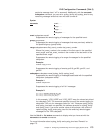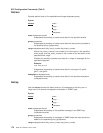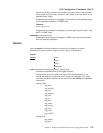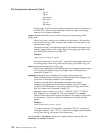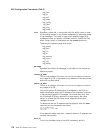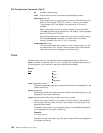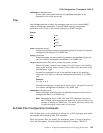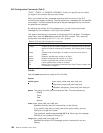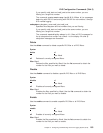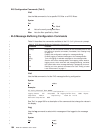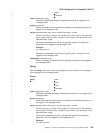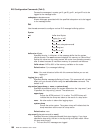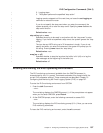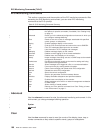
subsystem
subsystemname
Allows trace events associated with the specified subsystem to be
displayed on the router monitoring.
Trap
Use the trap command to select the message to be sent to the remote SNMP
network management workstation. A remote SNMP network management
workstation is an IP host in the network acting as an SNMP manager.
Syntax:
trap
event...
group...
range...
subsystem...
event
subsystem.event#
Causes the specified message (
subsystem.event#
) to be sent to a network
management workstation in an SNMP trap.
group
groupname
Allows messages that were previously added to the specified group to be
sent to a network management workstation in an SNMP trap.
range
subsystemname first_event_number last_event_number
Where
first_event_number
is the number of the first event in the specified
event range, and
last_event_number
is the number of the last event of the
specified event range.
Causes the messages that are in the specified range for the specified
subsystem to be sent to a network management workstation in an SNMP
trap.
Example:
trap range gw 19 22
Causes the messages in events gw.19, gw.20, gw.21, and gw.22 to be sent
to a network management workstation in an SNMP trap.
subsystem
subsystemname
Allows messages associated with the specified subsystem to be sent to a
management station in an SNMP trap.
Note: Messages for the IP, ICMP, ARP and UDP subsystems cannot be
sent in SNMP traps because these areas are or may be used in the
process of sending the SNMP trap. This could lead to an infinite loop
of traffic putting an undue strain on the router.
ELS Net Filter Configuration Commands
ELS net filters give you the capability of looking only at ELS messages with certain
net numbers and discarding other ELS messages.
When you create a filter, you specify the subsystem, event, or range of events to
which the filter applies. You also specify the queue (for example, “DISPLAY”,
ELS Configuration Commands (Talk 6)
Chapter 13. Configuring and Monitoring the Event Logging System (ELS) 181



